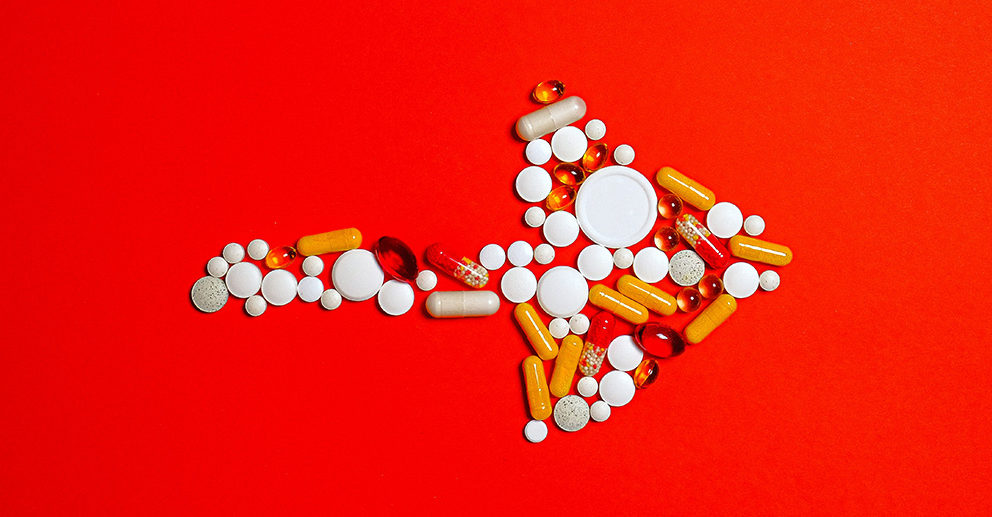Internet of Things (IoT) is slowly emerging to be a great disruptor because tracking sensors and smart devices have gained prominence in supply chains. These devices don’t have to be scanned like barcodes – they can transmit real-time data to other servers or devices within milliseconds. Real-time data is vital for pharmaceutical companies, as the manufacturing process is complex and sensitive, while product quality has to be perfect. Moreover, transportation has to be handled efficiently, with proper temperature range to be maintained in case of certain drugs and medicines. There is no room for error when it comes to production and delivery standards. This is where Connected Logistics plays an important role.
Why is Connected Logistics important in the pharmaceutical industry?
Drug production, which includes R&D, makes up a significant chunk of sales revenue for pharmaceutical companies. Manufacturing new drugs is a very complex process, and with a Connected Logistics solution, relevant data can be made available. It is to ensure that issues with formulations are proactively managed and batches are produced as per required standards. Patterns or trends that can cause delays or slowdowns during delivery and inefficient processes can be identified beforehand, so corrective action can be taken. For instance, preventive maintenance cycles can be analyzed, set, and adjusted using smart devices.
Manufacturing
Even though batch manufacturing is in current practice in the pharmaceutical industry, automation, and controlled techniques can be deployed for regulating the movement of personnel and materials. It will maintain safety and efficacy by improving visibility in various manufacturing activities.
Warehousing
Organizations must avoid shortages, excess inventories, and wastages, both at the parent company, as well as all the locations it is present at several places. Connected Logistics allows better visibility via connectivity of multiple locations and better management of stock availability, facility, optimization, precautionary actions, and more.
Transportation
When it comes to a supply chain process in the pharmaceutical industry, the timely availability of stocks at consumer points is a very challenging task. But these smart devices allow time-to-time monitoring of movements of stocks and vehicles through the GPS system.
Last Mile
Using IoT devices, pharmaceutical companies can easily keep tabs on the shipment from the warehouse to the final delivery location (last mile). It can track temperature and product condition along the way too. Detailed shipment tracking information can be accessed on a single platform, such as departure and arrival of the shipment, real-time location, expected delays, etc.
Tracking
Due to smart tracking, the status and real-time location of the shipment are always visible. In case an item gets lost or misplaced in transit, Connected Logistics helps supply chain managers find out where the loss occurred, analyze the issue better and also track if the product has been stolen.
Control cold chain conditions
Temperature sensing tags are one of the crucial benefits of Connected Logistics. These tags continually record temperatures and environmental conditions – data is consistently uploaded to the cloud. For pharmaceutical companies, it extends visibility in virtually every area – development, manufacturing, transport, distribution, dispensing, and consumption. Real;-time data when combined with advanced analytics engines becomes the basis for making quicker and more accurate decisions. It helps to identify bottlenecks, verify product quality, and assure regulatory compliance.
What can Anstel’s Connected Logistics help?
Real-time visibility into warehouse operations is a must, or else it becomes tough to track products, apart from unviable wastage of space and temperature variations while handling sensitive products.
Warehouse management
Using smart sensors and cameras, the quantity of goods in storage facilities is always monitored. The system checks the quality of stock present in the warehouse. Perishable goods, erosive products, and bio-degradable raw materials can be analyzed by incorporating machine learning and computer vision technologies in warehouse management systems.
Handling supply shortage
Connected Logistics helps to manage optimum inventories based on business rules defined by companies so planned decisions can be taken about manufacturing and sending out relevant products to the market. Thus, a stable supply of drugs is maintained, so needy patients can get them on time.
Improving security
Bidirectional communication is essential between the information seeker and IoT device – Connected Logistics makes supply chain security more robust by facilitating this. Tracking of the inventory, in regards to the location and current status of the package in transit, is vital. It can be enhanced using bar codes, RFID tags, and smart labels for packaging. The movement of drug inventory can be tracked at every point, thus potentially saving millions of dollars, while ensuring genuine products are delivered and deterring drug counterfeiters.
Dealing with transportation issues
During shipping and transportation, organizations obtain large amounts of information via technologies such as Radio Frequency Identification (RFID) chips and IoT devices in the carriage trucks, shipments, and individual product units. It allows all stakeholders to know the exact location and condition of goods. It means an increase in overall visibility and transparency. With the help of Connected Logistics, organizations can plan bulk orders and shipments well in advance. A lot of information is being generated, and combined with real-time updates; it ensures there are no delayed deliveries. The exact nature of data ensures businesses don’t make errors about the capacity of containers or trucks while creating size-related plans for individual batches of goods to be shipped at a given point in time.
Temperature sensing
Product degradation in transit means recalls revenue leakage and loss of credibility. It is necessary to keep tabs on the temperature of stored drugs in transit to ensure they are stable and within acceptable ranges till they reach the destination. If the temperature deviates from a specific range, an alert is immediately sent to the fleet managers. Thus, major issues could be prevented.
For instance, the need for cold storage transportation has been highlighted even more during the Covid-19 pandemic. Most of the Covid-19 vaccines have to be stored at near sub-zero temperatures as they are transported all over the world. Managing cold chain storage and transport becomes a critical task that can be resolved using Anstel’s Connected Logistics solution. Sophisticated technology continually tracks environmental conditions in cold chains during transport, thus guaranteeing product quality and efficacy, via environmental sensors integrated into product packages or pallets in shipment containers.
Preventing theft in transit
Pharmaceutical companies have experienced massive losses due to the theft of drugs in transit. It has also resulted in patients being deprived of timely receipt of drugs. GPS tracking and condition monitoring ensure real-time visibility and security during transport. The logistics team can analyze and compare data regarding the progress of the shipment from anywhere. Connected Logistics solutions can reduce time to market, prevent product damage and waste, and decrease carrying costs.
Fine-tuning last-mile delivery
Connected Logistics solutions can detect potential issues in delivery routes, weather conditions, and other aspects. It helps to create an efficient last-mile delivery system without delays. Critical drugs often have to be delivered within a designated time frame, and Connected Logistics ensures the shipment reaches the end customer as quickly as possible. This delivery process is important as it often results in the retention of customers and builds credibility.
The ultimate goal is to ensure each part of the pharmaceutical industry’s supply chain becomes a cornucopia of data, which can be analyzed to optimize operations, decrease costs, and improve customer satisfaction.

 Global
Global Australia
Australia India
India


Recent Comments